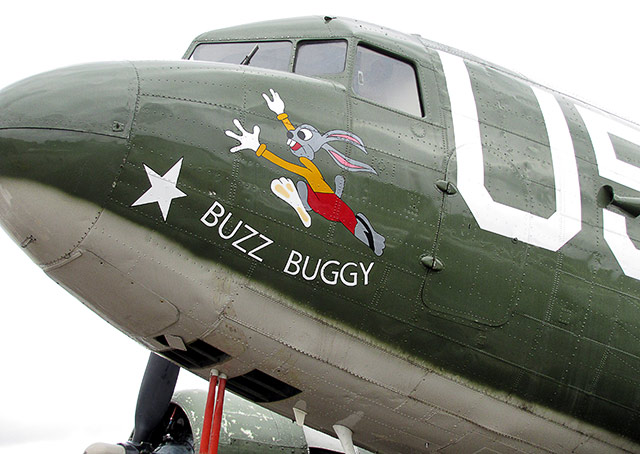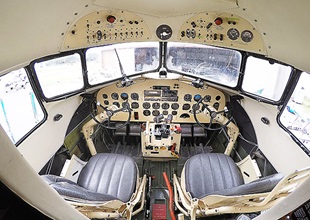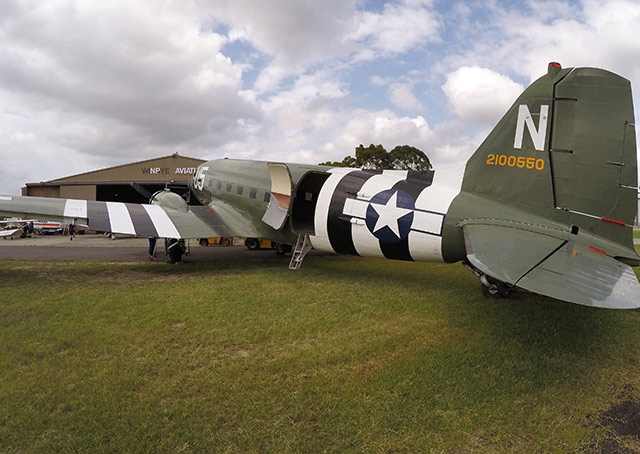
Guilin, China’s Flying Tiger Guilin Heritage Park, beautifully designed and comparable to any of the more modern Smithsonian buildings in Washington, D.C., will receive a Douglas C-47 Skytrain in August like those that flew the Hump, if everything goes right. Everything must go right because there is barely enough money to bring it from Australia, where it was restored by a former owner. The planned date for the flight is Aug. 15.
The aircraft, nicknamed Buzz Buggy, was acquired two years ago by the Flying Tiger Historical Organization headed by Larry Jobe, a California real estate businessman and retired United Airlines pilot. It had just completed a complete overhaul but a test flight revealed a bad engine that delayed the sale. The hope had been to deliver the aircraft in 2015.
Jobe will serve as a relief pilot but he is not type rated in a DC-3, the civilian equivalent of a C-47. The pilots for the flight will be U.S. Air Force Academy graduate Dale Mueller and DC-3 instructor Joe Fisher. The estimated cost of the seven- to nine-day, 7,000-mile trip starting near Sydney, Australia, is $100,000.
Should there be maintenance problems along the way, the cost could rise. The group paid more than expected, $150,000, since the aircraft had just completed restoration. That has reduced the amount available for the flight.
 The Hump was an especially dangerous route. Since the C-47 couldn’t climb above the peaks of the eastern end of the Himalayan Mountains from India to China, Japanese fighter plane pilots waited for them in the passes where they made easy targets. The supply missions were critical for the Chinese Army and Brig. Gen. Claire Lee Chennault who commanded the Flying Tigers.
The Hump was an especially dangerous route. Since the C-47 couldn’t climb above the peaks of the eastern end of the Himalayan Mountains from India to China, Japanese fighter plane pilots waited for them in the passes where they made easy targets. The supply missions were critical for the Chinese Army and Brig. Gen. Claire Lee Chennault who commanded the Flying Tigers.
While the airplane is painted in D-Day stripes for a movie years ago, it is to be repainted to recognize both the roles of the Chinese National Aviation Organization that pioneered the routes and that of American forces during World War II. There isn’t money for the paint job so it will be repainted by the museum after it arrives, Jobe said.
Chennault started out in Kunming, China, but relocated to Guilin where he set up headquarters in a command operations cave. The rock he stood on outside the cave to watch actual battles remains, marked by a plaque placed by Anna Chennault, the general’s wife. The cave was blown up by a 500-pound bomb to deny valuable information for advancing Japanese forces, Jobe said. There are efforts to restore the cave to its Chennault days.
Jobe said the idea to form the Flying Tiger Historical Organization came from its executive director, retired Air Force Maj. Gen. James T. Whitehead, who was visiting the Guilin site years ago with Jobe. Jobe commented that while the area still looked as it did in World War II, development was quickly overtaking the area. Whitehead commented that something should be done to preserve Chennault’s old base, and the organization was born.



